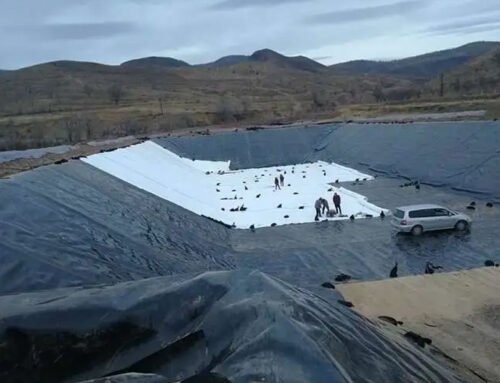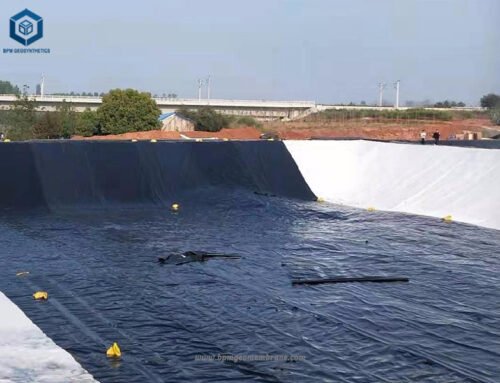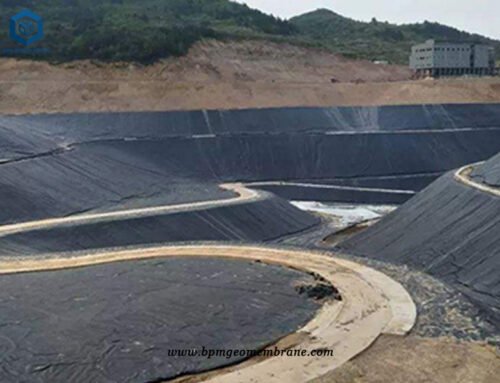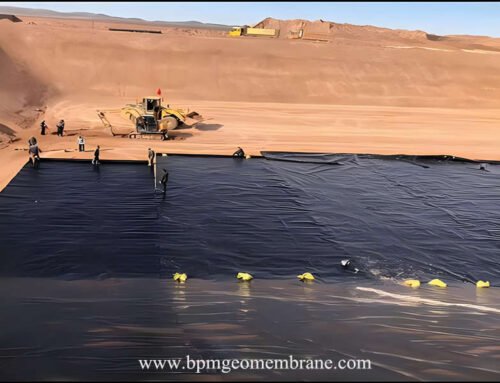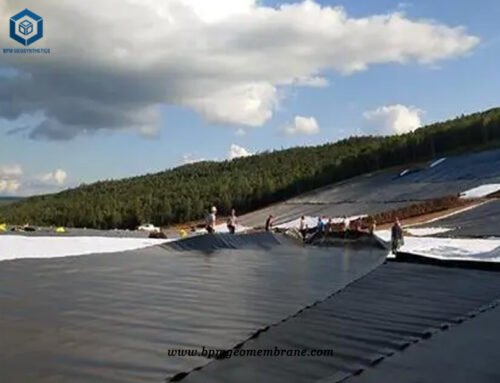HDPE geomembrane liners, also called HDPE plastic liners, exhibit exceptional resistance to various solvents, making them the most widely used geomembrane liners globally. They find extensive application in industries such as waste management, water containment, aquaculture, mining, power plants, and civil engineering. These liners are especially suitable for large-scale projects that necessitate UV and ozone resistance, chemical resilience, and high-quality installations. HDPE liners demonstrate outstanding durability and service life due to their exceptional UV and chemical resistance when exposed to environmental factors.
1. What Is A Plastic HDPE Liner?
A plastic HDPE liner serves as a geomembrane liner in various industries for containment purposes. It is constructed from high-density polyethylene (HDPE) plastic material, renowned for its exceptional properties and durability. BPM manufactures HDPE plastic liners using top-quality HDPE resin, combined with additives like carbon black, antioxidants, anti-aging agents, and UV resistance components. This formulation yields a geomembrane with superior strength, good ductility, high anti-seepage ability, strong chemical stability, and an extended service life. Moreover, it offers cost-effectiveness and easy installation.
Application
HDPE geomembranes are renowned for their solvent resistance, making them versatile and suitable for various environments. While they may be less flexible than LLDPE liners, HDPE liners offer higher specific strength and can endure elevated temperatures.
The design and engineering of HDPE liners ensure their strength and flexibility, making them ideal for applications like landfill caps and containment ponds. These liners maintain a consistent thickness and exhibit optimal welding speed and quality, ensuring secure and reliable containment.
HDPE plastic liners have proven practical in energy-related applications such as biogas ponds, storage tanks, evaporation ponds, and cooling ponds. BPM provides high-quality HDPE plastic liners fabricated using advanced three-layered pressing technology and state-of-the-art automatic geomembrane production lines. Manufacturing processes adhere to Geosynthetic Research Institute (GRI) GM13 standards, ensuring consistency and quality.
BPM HDPE liners meet or exceed the requirements outlined by GRI GM13/17 standards. These standards define specific values for testing frequency and methods, ensuring liners fulfill necessary criteria for environmental and waste containment in civil engineering projects. By meeting these rigorous standards, BPM HDPE liners deliver reliable performance and compliance with regulatory and quality requirements.
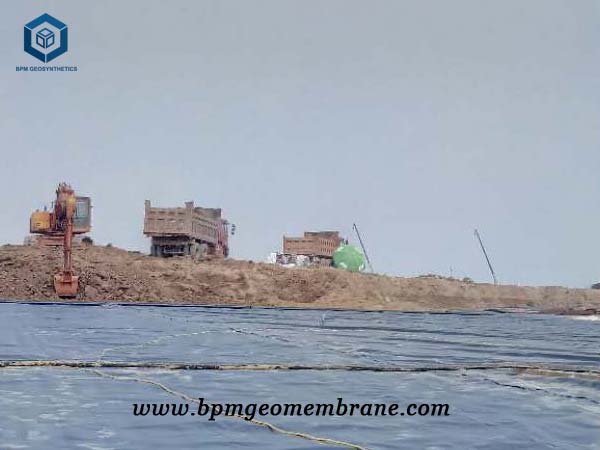
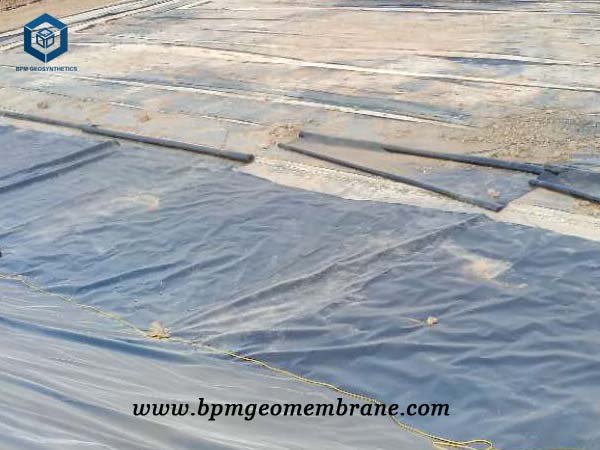
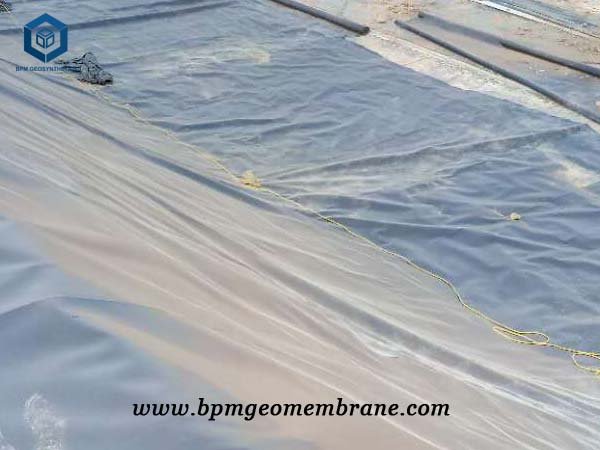
2. What Are The Benifits of HDPE Plastic Liner?
HDPE plastic liners exhibit benifits of excellent chemical resistance, good UV resistance, affordability, weldability, fish safety, high durability, and performance in cold temperatures. These advantages make HDPE plastic liners a versatile and reliable choice for containment projects in various industries, including environmental protection, waste management, agriculture, and mining.
2.1 Excellent Chemical Resistance
HDPE plastic liners exhibit outstanding resistance to a wide range of chemicals, including acids, alkalis, and solvents. This chemical resistance makes them suitable for applications involving containment of hazardous or corrosive substances.
2.2 Good UV Resistance
HDPE plastic liners have good UV stability, which enables them to withstand prolonged exposure to sunlight without significant degradation. This UV resistance eliminates the need for additional soil cover, reducing project costs and simplifying installation.
2.3 Cost-Effective
HDPE plastic liners are relatively inexpensive compared to other geomembrane materials. Their cost-effectiveness makes them a popular choice for projects with budget constraints or large-scale applications that require a cost-efficient solution.
2.4 Weldable
HDPE plastic liners can be easily welded together using heat, creating seamless and continuous lining systems. This welding capability ensures secure containment and minimizes the risk of leaks or seepage.
2.5 Fish Safe
By being fish-safe and not releasing harmful substances that can jeopardize aquatic life, HDPE plastic liners are an excellent choice for fish ponds, aquaculture projects, and environmental protection initiatives that prioritize the preservation of aquatic ecosystems.
2.6. Very Durable
HDPE plastic liners are highly durable and can withstand long-term exposure to environmental conditions. They have excellent resistance to punctures, tears, and abrasion, ensuring long-lasting performance and minimizing the need for frequent repairs or replacements.
2.7 Performs Well in Cold Temperatures
HDPE plastic liners maintain their flexibility and integrity even in cold temperatures. They perform well in freezing conditions, making them suitable for applications in cold climates or projects that require resistance to low temperatures.
3. What Is The Life Expectancy of An Plastic HDPE Liner?
The life expectancy of an HDPE plastic liner can vary due to factors like environmental conditions, installation quality, chemical exposure, and maintenance. Laboratory and field durability testing suggests that an HDPE liner can last over 70 years with 50% degradation. However, it’s important to consider that actual lifespan may differ based on project-specific requirements and conditions. Harsh chemicals, extreme temperatures, UV radiation, and mechanical stress can impact the liner’s longevity. To maximize lifespan, adhere to industry best practices during installation, including surface preparation, seam integrity, and quality control. Regular inspections, maintenance, and necessary repairs can also help extend the HDPE liner’s life expectancy.
Overall, HDPE liners are known for their durability and long service life, making them a reliable choice for containment applications.
4. Case Study of HDPE Plastic Liner for Biogas Pond Project in Thailand
In March 2018, our company received an inquiry from a customer in Weifang, Thailand, regarding the use of HDPE plastic liner for their biogas pond project. Over a period of three months, we engaged in discussions with the customer to determine the product specifications, installation requirements, and delivery time. In June 2018, we finalized the agreement, signing a contract for the supply of 30,000 square meters of HDPE plastic liner for the biogas pond project.
Product Specifications
To meet the biogas pond project’s specifications in Thailand, we supplied a 1.5mm thick HDPE plastic liner. The liner was tailored to dimensions of 6m × 50m, covering an area of 300 square meters per piece. With a total requirement of 30,000 square meters, we committed to delivering the liner within one week to meet the project’s timeline.
By ensuring effective communication, product customization, and prompt delivery, we successfully met the customer’s needs and provided a durable and efficient HDPE plastic liner solution for their biogas pond project in Thailand.
I believe that we will have smooth cooperation in the future. Our products have been tested by professional third parties and the quality is up to standard. I look forward to our next cooperation.
5. About BPM Geomembrane
BPM Geomembrane has successfully supplied a wide range of effective and cutting-edge geomembrane and geosynthetic products to more than 81 countries. Our BPM brand geosynthetics have obtained certifications such as ISO9001, ISO14001, OHSAS18001, Soncap, SASO, and BV. Additionally, they have passed rigorous testing conducted by SGS, Intertek, and other reputable organizations.
We also offer professional design and installation services, catering to our customers’ specific needs. OEM and ODM services are available as well. For any questions or inquiries, please don’t hesitate to contact us, and we will promptly respond to your query.

